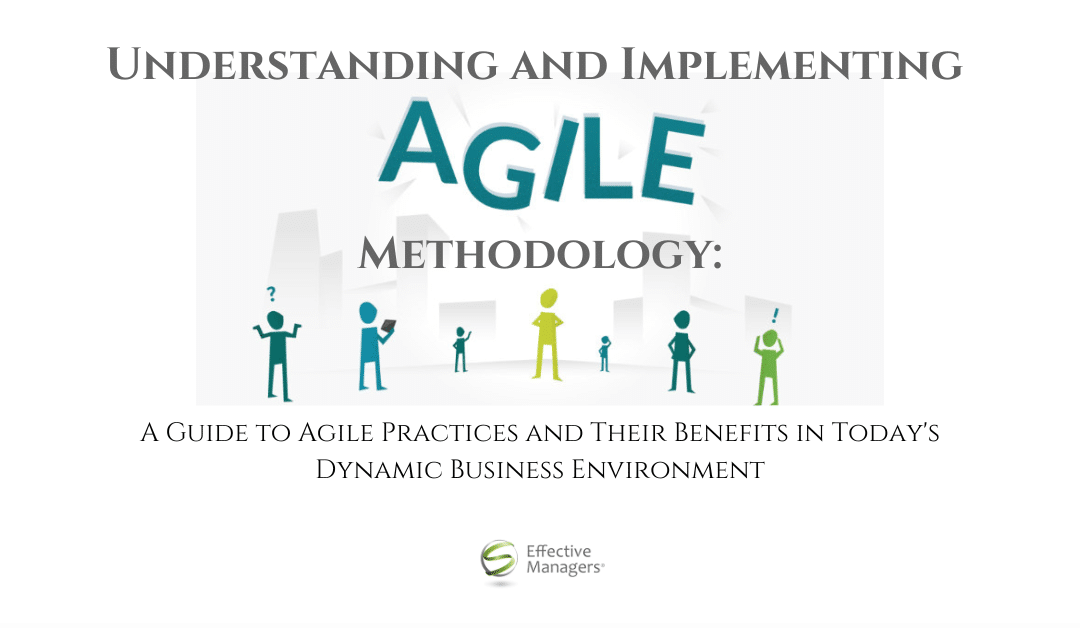A Guide to Agile Practices and Their Benefits in Today’s Dynamic Business Environment
In to-day’s business landscape, agility has become a key driver for success. Agile methodology, originally conceived for software development, has transcended its IT roots to become a vital approach in various business sectors.
The Essence of Agile Methodology
Agile methodology is underpinned by the Agile Manifesto, which emphasizes individuals and interactions over processes and tools, working solutions over comprehensive documentation, customer collaboration over contract negotiation, and responding to change over following a plan. This approach promotes flexibility, team collaboration, customer focus, and responsiveness to change.
The agile framework is iterative and incremental, involving regular reassessments and adaptations. It encourages fast failure, learning from mistakes, and quickly adjusting to new information or changing requirements. This iterative process ensures that the final product or service is aligned with customer needs and market dynamics.
Implementing Agile in Your Organization
The transition to an agile framework requires a cultural shift. It’s not just about adopting new processes. It’s about changing the mindset of the entire organization to value adaptability, collaboration, and customer focus. This involves training teams on agile principles and practices, and more importantly, fostering an environment that supports these values.
Scrum is one of the most popular frameworks used in agile transformation. It involves roles such as the Product Owner, Scrum Master, and the development team. Implementing Scrum requires understanding these roles and how they collaborate in sprints, which are short, time-boxed periods when a specific work has to be completed and made ready for review.
Kanban is another agile approach that focuses on visualizing work, limiting work in progress, and maximizing efficiency (or flow). Kanban boards are used to visualize the workflow and help teams manage their work more transparently and effectively.
Benefits of Agile Methodology
The primary benefit of agile methodology is enhanced adaptability. In a business environment where market conditions and customer preferences can change rapidly, agile enables organizations to respond quickly and effectively. This flexibility can be a significant competitive advantage.
Agile also promotes higher product quality. Through iterative development and frequent testing, issues are identified and resolved quickly, leading to a better end product. Continuous feedback from users ensures that the product or service remains relevant and meets customer needs.
Increased team morale and productivity are notable benefits of agile. Teams in an agile setting are empowered to make decisions and take ownership of their work. This autonomy, coupled with the collaborative nature of agile, leads to higher engagement and satisfaction among team members.
Challenges in Agile Implementation
Most importantly, the clarity of accountability for outcomes needs to be maintained. Whether you are the CEO, the Owner, and executive or a team manager, you are accountable for managerial leadership. One of the most important things you can do for driving team engagement is to ensure that each team member is clear about their role and how they are accountable to interact with others.
While the benefits are significant, implementing agile can also present challenges. Resistance to change is a common hurdle, as agile requires a departure from traditional top-down management approaches. Overcoming this resistance involves continuous communication, training, and demonstrating the value of agile in achieving business objectives.
Maintaining customer focus is critical in agile. Organizations must ensure that customer feedback is integrated into the development process. This requires effective communication channels and a commitment to truly understanding and meeting customer needs.
Conclusion
Agile methodology offers a framework for organizations to thrive in today’s dynamic business environment. Its focus on adaptability, customer-centricity, and continuous improvement aligns well with the challenges of modern business. Implementing agile may require significant cultural and operational changes, but the benefits in terms of flexibility, quality, and team morale make it a compelling choice for organizations aiming to stay competitive and responsive in an ever-changing marketplace.
Click here to email Dwight to explore how you can improve yours and your team’s performance.






